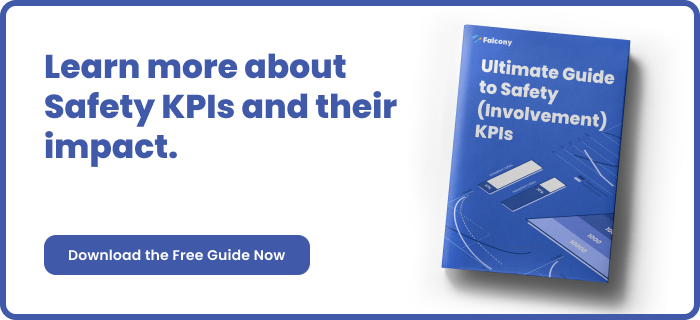9 Common Safety Risks in Entertainment and Media
The entertainment and media industries are exciting, dynamic, and essential to modern society.
However, behind the glamour and thrill of film sets, live shows, and media productions, safety risks often lurk in the background. From physical injuries on set to cyber threats affecting digital content, these risks can compromise the well-being of workers, performers, and the integrity of the production itself.
In this blog, we will highlight nine common safety risks that professionals in entertainment and media need to be aware of to ensure a secure working environment for all involved.
Physical Injuries on Set
Physical injuries are one of the most prevalent safety risks in the entertainment industry. This includes accidents on film sets, such as falls, trips, or collisions. With equipment, cables, props, and complex sets, the risk of injury is heightened. Furthermore, stunts or special effects can put performers at risk if proper precautions are not taken.
Preventive Measures: Rigorous safety training, comprehensive risk assessments, and ensuring that all equipment is well-maintained are essential for reducing these risks. Additionally, employing professional stunt coordinators and ensuring the appropriate use of safety gear can further mitigate dangers.
Electrical Hazards
Entertainment productions, especially in film, television, and theatre, often rely heavily on electrical equipment, such as lights, sound systems, and cameras. Faulty wiring or improper handling of electrical devices can result in serious injuries or even fatalities.
Preventive Measures: Regular maintenance and inspections of electrical equipment, ensuring that all electrical work is performed by certified professionals, and adhering to electrical safety standards are crucial to protecting staff and performers.
Fire Hazards
The use of special effects, pyrotechnics, and flammable materials is common in the entertainment sector, particularly in film, theatre, and live shows. These elements increase the potential for fires, which can quickly spread and pose a significant risk to both people and property.
Preventive Measures: Strict adherence to fire safety protocols, the presence of trained fire marshals, and the use of fire-resistant materials are necessary to prevent accidents. Additionally, ensuring that fire extinguishers and emergency exits are readily accessible can save lives in the event of a fire.
Health and Hygiene Risks
In environments such as film sets, live events, and media production studios, poor health and hygiene practices can lead to the spread of illnesses. Close contact with large groups of people, shared spaces, and frequent use of props and equipment increases the likelihood of infections and other health-related issues.
Preventive Measures: Regular cleaning and sanitising of sets, equipment, and shared spaces are essential, especially during events such as live shows or large gatherings. It's also important to ensure that crew members and performers have access to proper medical support and health protocols.
Mental Health Challenges
The entertainment and media industries are renowned for their high-pressure environments. Long working hours, tight deadlines, and the intense demands of performances or productions can lead to significant mental health challenges, such as stress, anxiety, or burnout.
Preventive Measures: Promoting mental health awareness, providing access to support services, and creating a work environment that encourages balance and well-being are all essential steps to protect the mental health of all employees.
Cybersecurity Threats
With the increasing reliance on digital media and content distribution platforms, the entertainment industry is vulnerable to cyber-attacks. Hackers can target confidential content, intellectual property, or personal data, causing major financial losses and reputational damage.
Preventive Measures: Adopting robust cybersecurity measures, including encryption, secure password practices, and regular system audits, can help safeguard against data breaches. Educating employees about the risks and best practices for online security is also essential.
Equipment Malfunctions
Entertainment productions often involve complex machinery, such as cameras, lighting systems, and sound equipment. Malfunctions can lead to accidents, delays, and even potential injury if not handled correctly.
Preventive Measures: Ensuring that all equipment undergoes regular testing and maintenance, and that operators are trained on the safe use of equipment, will reduce the risk of malfunctions leading to accidents. Additionally, having backup equipment available for critical tasks can prevent production delays.
Crowd Control Issues
In large-scale live events, concerts, and public appearances, managing crowds presents significant safety challenges. Uncontrolled crowds can lead to stampedes, accidents, and injuries, especially in confined spaces or when there is a lack of effective communication.
Preventive Measures: Effective crowd management strategies, including clear signage, trained personnel, and well-placed barriers, are essential. It’s also important to have an emergency response plan in place for crowd-related incidents.
Legal and Compliance Risks
The entertainment industry is heavily regulated, with strict guidelines surrounding everything from labour laws to intellectual property rights. Failing to comply with these regulations can result in legal penalties, fines, and damage to reputation.
Preventive Measures: Keeping up to date with relevant laws, such as health and safety regulations, labour standards, and intellectual property rights, is crucial. Having legal advisors and compliance officers on hand to guide the production process ensures that everything is above board.
Conclusion
The entertainment and media industries, while exciting and full of creative potential, come with their own set of safety risks. From physical injuries on set to cyber threats and crowd control issues, being proactive in identifying, assessing, and mitigating these risks is essential to ensuring the safety and success of any production. By adopting best practices and fostering a safety-conscious culture, professionals in these industries can continue to create captivating content while protecting the well-being of everyone involved.
If you're looking for a platform to manage any and all types of risks, we've got you covered. Falcony | Risks is easy-to-use, boosts two-way communication, has customisable workflows, automated analytics, vast integration possibilities and more. Start your 30-day trial or Contact us for more information:
We are building the world's first operational involvement platform. Our mission is to make the process of finding, sharing, fixing and learning from issues and observations as easy as thinking about them and as rewarding as being remembered for them.
By doing this, we are making work more meaningful for all parties involved.
More information at falcony.io.

Related posts
8 Most Common Near Misses in Entertainment and Media
Just like any other industry, near misses—incidents narrowly avoiding potential harm or...
8 Safety Incidents in Entertainment and Media Industry
While creativity and innovation thrive in entertainment and media industry, safety incidents can...







